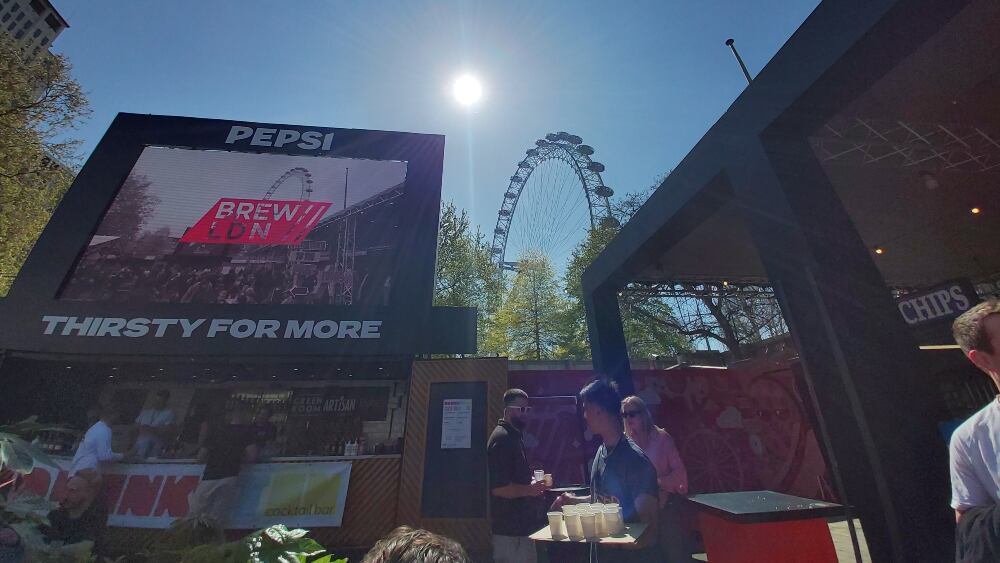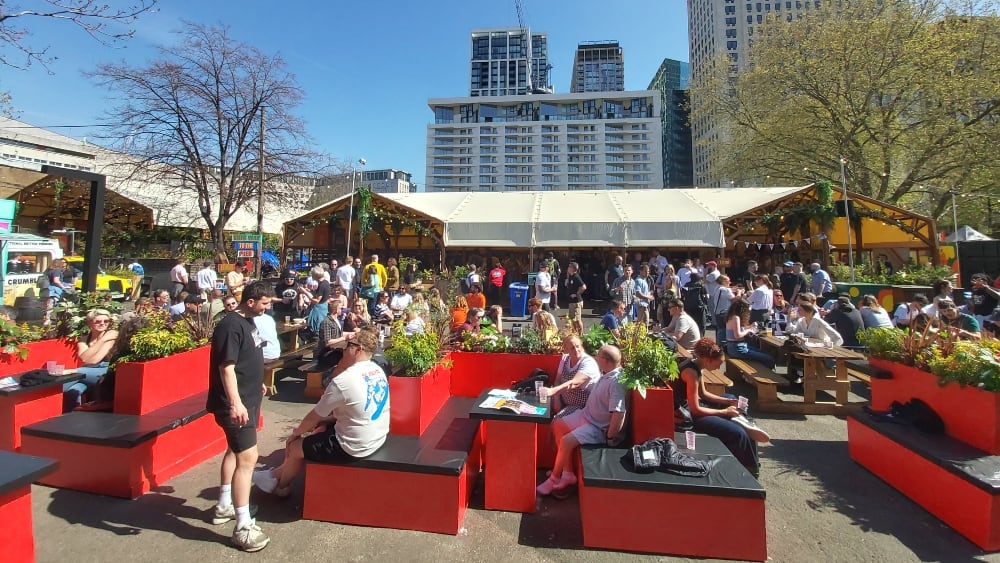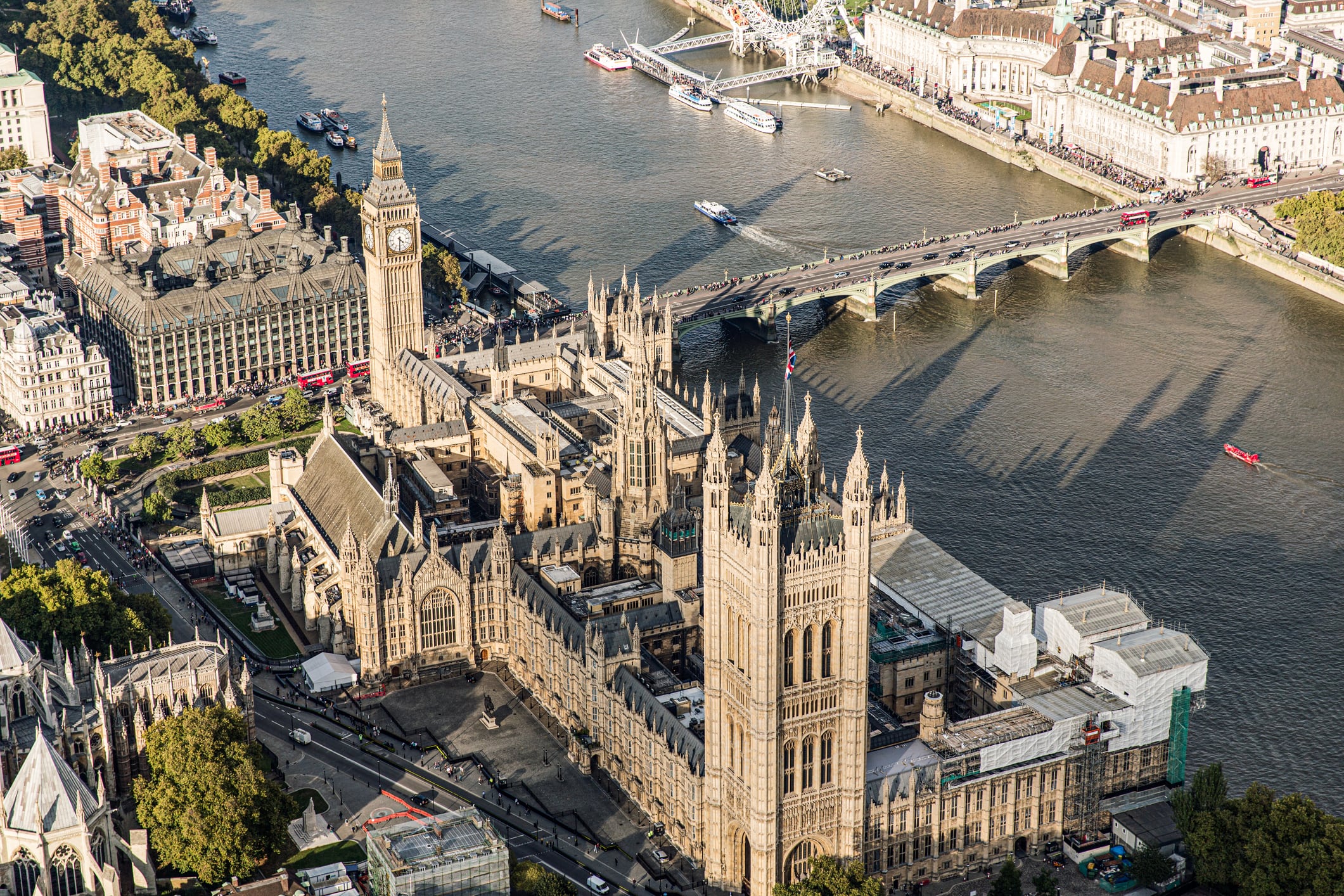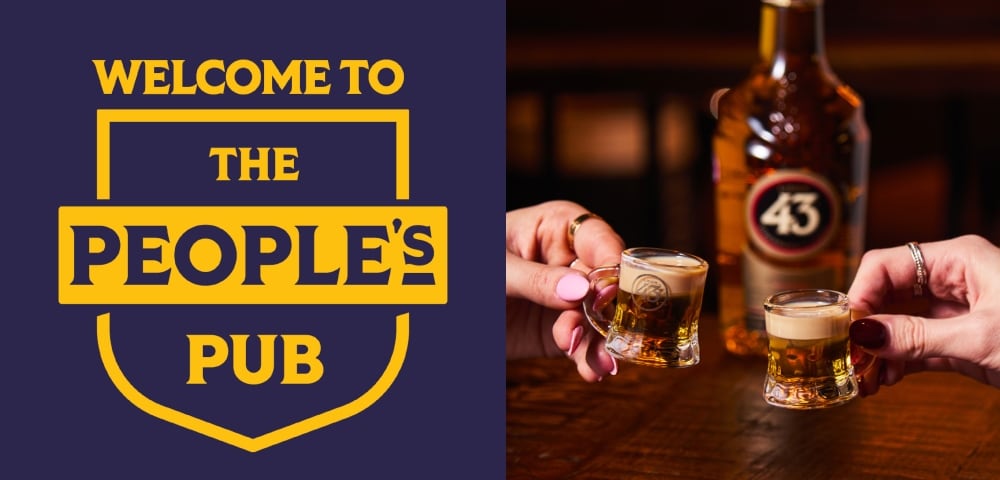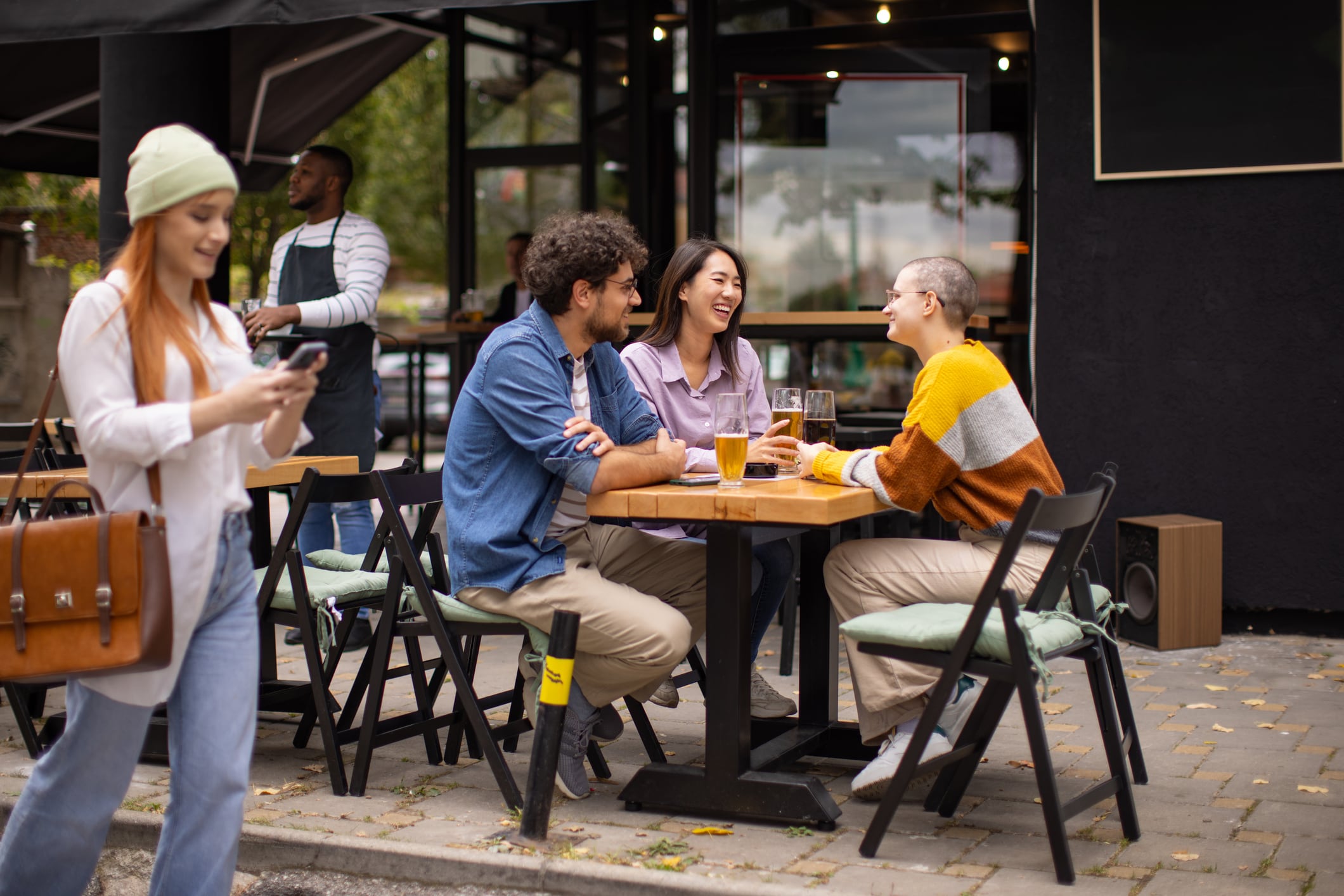The event, which was held at Between The Bridges, Waterloo, London, saw dozens of breweries and cideries come together for three days with lots of food options and live music.
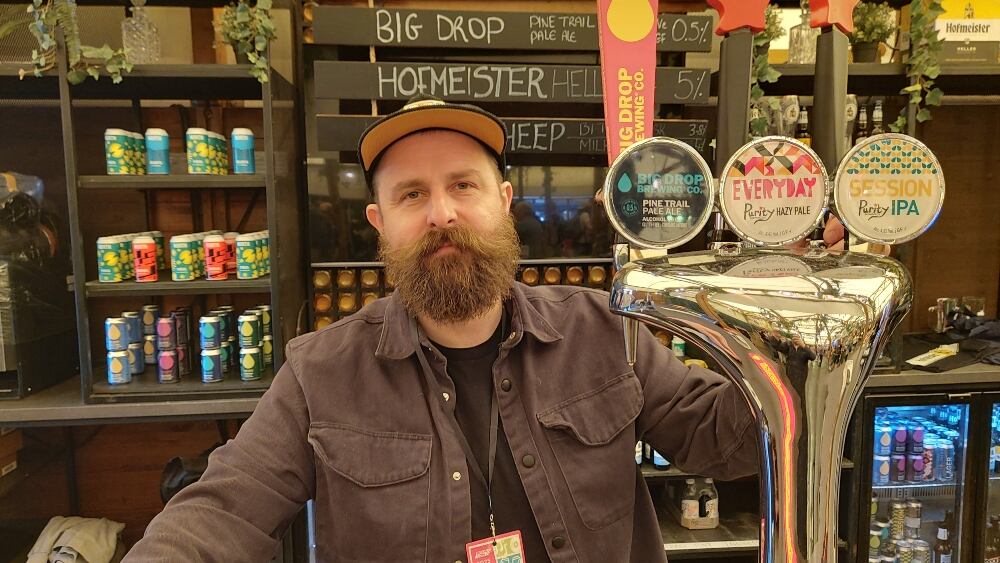
Keystone Brewing Group
Keystone Brewing Group, which counts Black Sheep Brewery, Purity, Big Drop, Magic Rock, Fourpure, North Brewing Co, Brick, Brew By Numbers (BBNo) and Hofmeister among its brands, had plenty of its beers on show.
Keystone head of marketing Paul Brazier said: “What we’re seeing a lot more is low & no growth and mid strength as well.
“This week, we’ve launched Purity Everyday Hazy Pale 3.4% ABV, gluten-free, vegan-friendly accessible beer and I’m seeing a lot more customers looking for that lower ABV.
“We brought [low & no brand] Big Drop into the portfolio in December and there is a growth opportunity there – we’re taking that opportunity to really grow the brand and the category, and what Big Drop offers is a differentiation from just lager because we have pale ales, IPAs, double-dried hopped pales as well. There’s some great beers that are full of flavour that giving consumers an opportunity to have a great experience with low & no.
“Big Drop’s mantra is to produce great beer that happens to be non-alcoholic. We’re out there to compete with alcoholic brews and give customers an opportunity to find out Big Drop is full of flavour and it’s really drinkable.”
On ‘mid-strength’ beer, the former head of marketing at Purity added: “We’ve always had a 3.4% ABV beer within Purity and obviously there are some duty opportunities [at that lower strength] and a lot of people are doing that but there’s a consumer trend for something with a little bit lower ABV but in terms of premium ingredients and to be full of flavour.”
On trends with brands such as Magic Rock and North Brewing Co, Brazier said pales, IPAs, hazy beers are where those brewers have always been strong and where they first started.
“Craft still has that great opportunity and what we are doing with those beers is bringing them back to their original, great-tasting recipes, making sure there are still those higher ABVs out there for the real core craft drinker and making sure there’s a range that meets the wider market at a lower ABV,” he added.
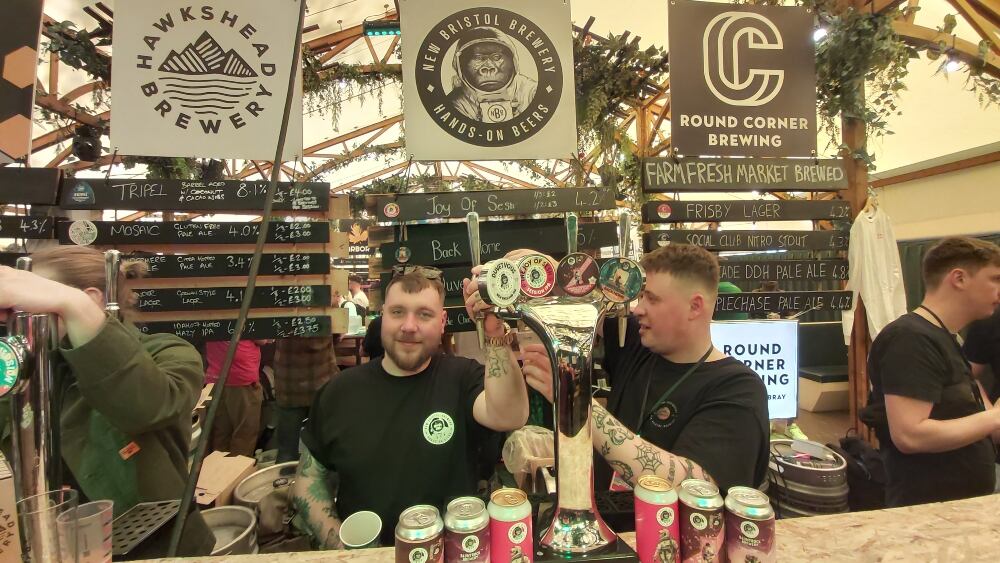
The New Bristol Brewery
The New Bristol Brewery sales director Tom Rooke said the brewery is seeing is a demand for more clear beer, eschewing the recent and ongoing love for hazy beers in the craft category, in particular.
“[People are looking for] bright IPAs and the clear beer is definitely coming back. We’ve seen a trend where hazy IPAs have really been there and now it’s almost like we’ve gone full circle.”
On the future, Rooke predicted: “I can imagine there will be a lot more hazy IPAs still coming out but the demand for clear beer and also low & no beers. Anything that is low in alcohol is doing really well for us. It’s not necessarily the no-alcohol beer but certainly a lower ABV.”
The low alcohol beer the New Bristol Brewery is doing well with is called 2.9 – which is also 2.9% ABV – and is, bizarrely, is a hazy beverage that Rooke said is “really good and really popular”. It also has Bristol Lager Light, which is a 0.5% ABV beer.
On the bar at BrewLDN, the brewer was pouring Duvet Vous New England IPA, The Joy of Sesh session IPA, a Double Chocolate Beetroot Cakes Stout at 8% ABV, which was a collaboration with a local cake company that was “really fun to do”.
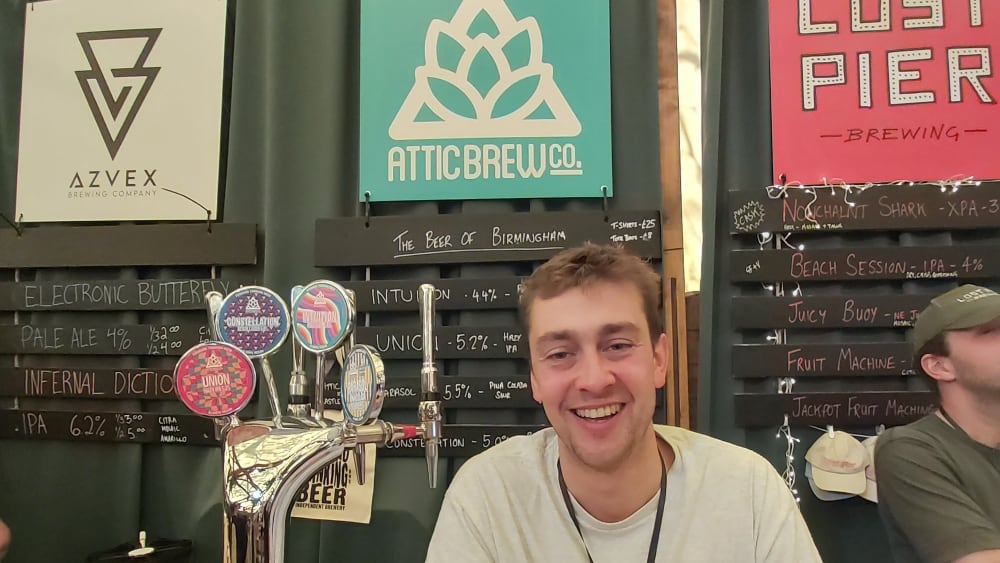
Attic Brew Co
Oli Hurlow, co-owner of Attic Brew Co, which was established in 2018 in Birmingham, explained the business began because “there wasn’t enough locally brewed beer”.
On Attic’s range, there’s a focus on accessibility, Hurlow said: “We want our beers to a way in for people who maybe haven’t been interested in craft beer in the past.”
Current trends he is seeing include a fall in ABV. Hurlow added: “That’s partly by the industry and by tax and it’s also partly driven by consumer demand but I don’t think people are looking at 3.4% and below.
“For the most part, people are looking less now at 5%-plus ABV beers – certainly within craft beer – and are more into 4% to 4.5%, maybe 3.8%.”
To suit this, Attic launched its Centro Session IPA at 4% ABV last week to target that trend.
A future trend Hurlow expects to make a comeback in the next five years is cask beer.
He explained: “In the next five years, [there will be] a real resurgence in cask and it will be cool again.
“There’s a rise of experiential bars now where you go to play table tennis and play baseball, etc. and the reason for that is you can’t get that experience at home. Everybody knows the big macro trend of more and more volume going through retailers but with cask, you can’t do that – you can’t have that sort of event.
“It’s that sense of drama of pouring a cask beer and I’ll think that will come back.”
Attic Brew Co produces a variety of cask beers, including its latest beer Centro.
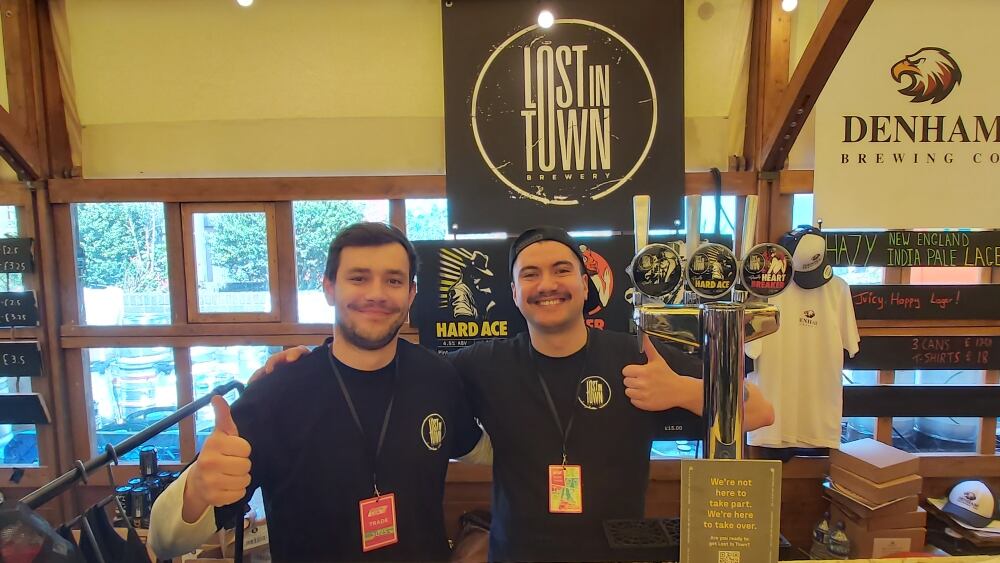
Lost In Town
Max Kelly and Maksim Aklulinin are the co-founders of London-based Lost In Town Brewery, which contract brews its beers in Exeter.
Kelly explained the business produces Heart Breaker pale ale at 3.4% ABV, which is came out last summer and is “really fruity, very light, nice and punchy for a 3.4”, which is “kind of trendy at the moment in terms of ABV”.
Its core beer is Hard Ace Lager was the first it launched, which is “like a German-US hop blend. It’s really light, a little bit citrusy and great in the hot weather that we’ve got ahead of us for the year.”
Meanwhile, Kingpin Pilsner, brewed specifically for BrewLDN, that pays homage to the Berlin roots of “nice but not overly hoppy, not overly bitter beers that are super creamy on the mouth and really easy to drink”.
Kelly explained the trends he is seeing: “If you went to a craft beer festival about five years ago, you would see a lot of 10%, 8%, really heavy nitro porters, some crazy sours, really intense hazy pale ales but there was a study released showing the latest generation aren’t drinking as much so lower ABV options are becoming so much more popular because you can drink them throughout the day/night and you don’t really wake up with a really awful hangover after drinking, say, five imperial stouts that are 15%!”
He added lagers are also on-trend. Kelly said: “The market is currently saturated with overly hoppy and floral lagers, and there’s nothing wrong with that but there is a place for that. A lot of people are getting more enjoyment out of beers that have gone back to their roots: really easy drinking, great for people that are coming into the craft beer scene and also a little break for the craft veterans who are used to their gooseberry sours and their really floral hazy IPAs.”
On the future, Kelly was not ready to make any bold predictions but said low and no is beginning to take over the market.
“We’ll definitely see a spring of low & no [beers], especially from really commercial brands starting to come out quite soon. It’s definitely a direction that a lot of breweries can go in but obviously making a 0.0 that’s good is the challenge.”
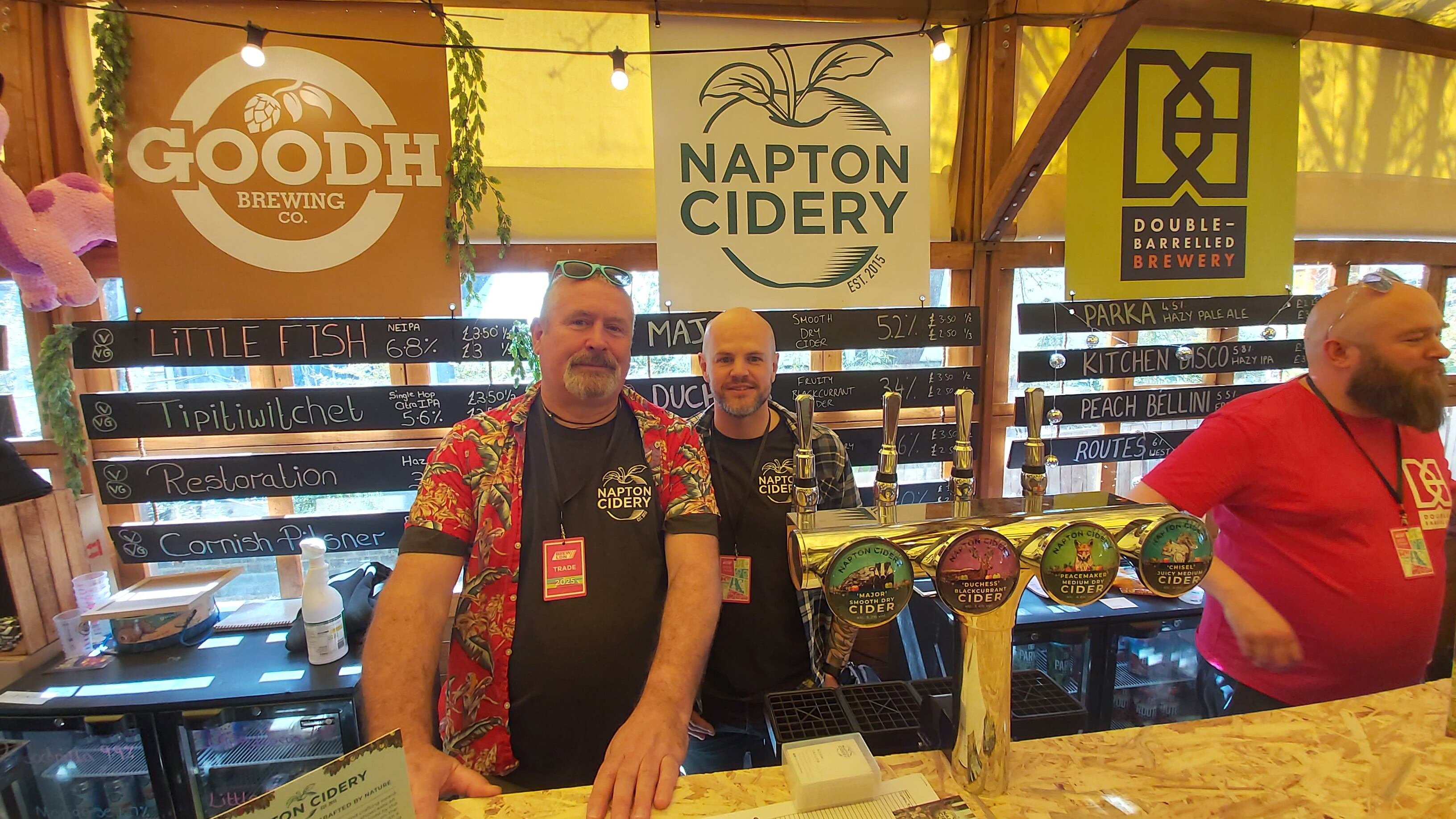
Napton Cidery
Warwickshire-based Napton Cidery is located on a small farm “in the middle of nowhere” and is also home to a brewery.
Sales manager Adam Taylor said the trends people are looking for in cider include a more premium experience and to see a story of provenance and heritage behind the brand.
Meanwhile, taproom host Nick Geden claimed Napton Cidery is the first and only B-Corp accredited cidermaker in the UK.
Low & no is obviously a big category at the moment that is in growth. We’re developing a low & no recipe at the moment and that will be ready in the next few months. That will bolster our range and then we’ve got pretty much something for everybody.”
At BrewLDN, Napton Cidery had a range of ABVs represented from 3.4% up to 5.2%.
Taylor added the cidery covers different varieties too, he explained: “We’re across the range too so we’ve got the slightly sweeter ones, medium dry – that one is Peacemaker at 4.6% ABV – and that’s what we actively target Aspall’s and Thatchers with and it’s going down very well.
“We’ve got apple brandies, perry ciders and most have won Great Taste and international awards.”
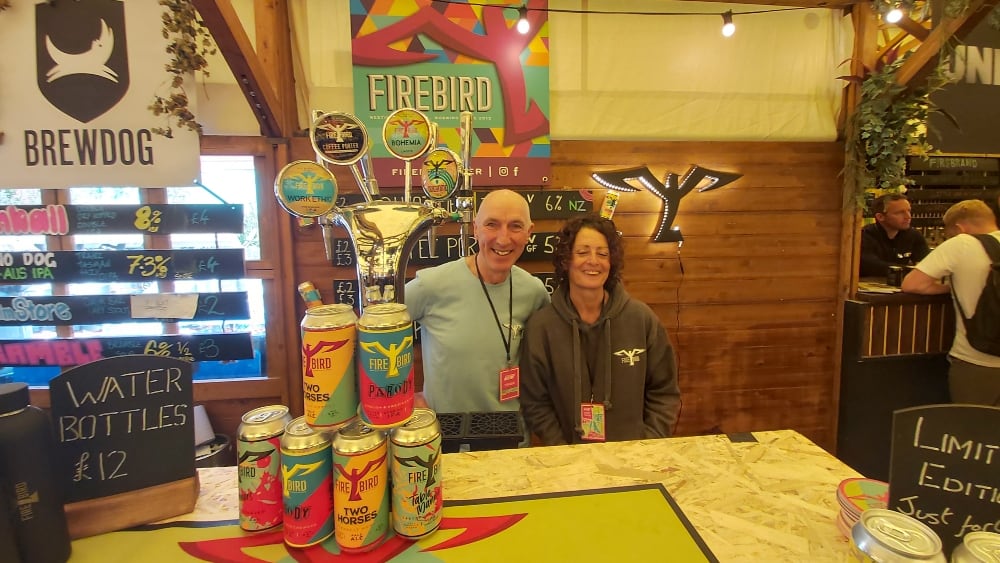
Firebird
Despite not seeing a great deal of change in trends post-Covid, “the long-standing decline in cask continues for us,” stated Firebird co-founder Richard Peters.
The West Sussex-based (Rudgwick near Horsham) brewery boss continued: “Cans are doing really well at the expense of bottles. We’ve made one or two quite strong beers that have done better but, on the other hand, there are some rural pubs we serve that just cannot deal with strong beers.
“We launched a table beer (Table Manners 2.8% ABV on keg) two years ago, which has done very well, surprisingly. It’s only 2.8% and we’re probably going to get into low & no alcohol when we can get the technology together.”
On the current Firebird range, the biggest seller is the cloudy New England IPA called Work Ethic 5.0% ABV.
“It’s delicious and we’ve been doing it for quite a while now but there’s nothing particularly unusual about it,” Peters said. “We have launched a big juicy IPA called Overtime that specialises in New Zealand hops and we’ve been surprised at the uptake. It’s quite strong at 5.5% but we don’t seem to have any trouble selling it and it’s actually commanding the correct price in local pubs. We thought it was a bit of a risk but it’s giving us the encouragement to keep innovating.”
He added that although Firebird has been slow at getting into limited edition beers, it is doing lots now even if “they’ll never be great money spinners because you don’t keep doing each one for long enough” but they make for “really good talking points for customers”.
Another good seller is its Wild Honey Belgian Blonde, which gives great excitement to a local beekeeper who provides the nectar.
Meanwhile, the brewery’s effort into making a nitro stout have proved fruitful for its Coffee Porter 5.5% ABV in collaboration with Surrey Hills Coffee.
A lot of Firebird’s beers are not produced due to the market but rather what the brewery wants to do just “for the hell of it”.
On trends to come, Peters said there will be increasingly more and more concentration in the market and it’s going to get harder and harder to get a fair share of the wholesalers’ mind because it’s all about money and saving the retailers so not all of us are going to make it and there is a net reduction so the people leaving [brewing] outnumber the people joining.
“You’ve seen some fairly big names have a hard financial time and [it will be difficult] to even have a business at the end of it.
“But the really great thing about this industry is the consumers out there just love it. It’s fantastic that it has penetrated the whole population and the same proportion of females as men enjoy it.
“It’s become much more universal and that’s great. That means the market been there for a long time.”
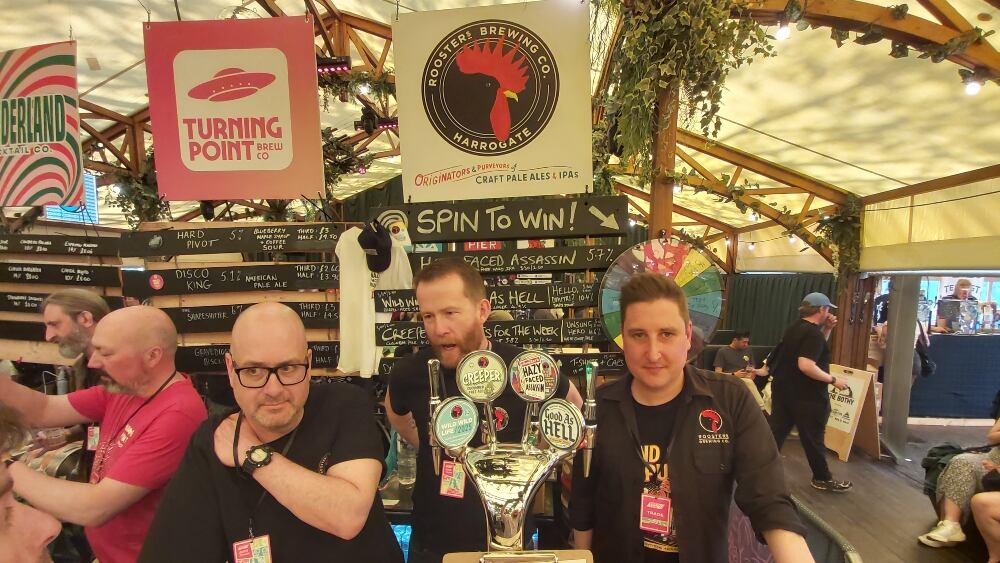
Roosters Brewing Co
Roosters Brewing Co joint managing director and operations director Tom Fozard said his Harrogate-base brewery is best-known for its pale ales and IPAs.
Fozard claimed when Roosters was founded in 1993, the original brewer was the first to import and brew with modern US hops and the flagship cask beer is called Yankee (4.3% ABV) after being the first American-style pale ale in the UK.
Fozard’s family took the reins in 2011 after Fozard’s father – who ran a chain of pubs – used to buy a lot of Roosters’ beers.
Since inheriting a cask-only brewery, it became one of the first in the country to install a canning line with only Beavertown, Fourpure and Camden being ahead of the North Yorkshire business.
With kegged beer coming online too, Yankee remains the flagship tipple but Fozard’s own homebrew recipe was tweaked by his brewer brother and released as Baby Faced Assassin Citra IPA (6.1% ABV) and newer variant Hazy Faced Assassin IPA (5.7% ABV) was pouring at BrewLDN.
On the trends Fozard is seeing, he said: “Hazy Faced Assassin, which like Baby Faced Assassin uses Citra hops, it also uses more than one hop and that’s something that’s taking off for us.
“The other thing is lager, we launched a 4.2% ABV, gluten-free one (Haus Lager) and we’ve got a 4.9% Hellas (Good As Hell) as well, also gluten-free, and in the past six weeks, the demand on those beers is really gathering pace.”
Upcoming trends Fozard expects to see include: “From talking to people here (at the BrewLDN event), more and more people are turning back to beers that actually resemble beers more and that’s what we do.
“I’m talking about lager and cask beers and the uptake we’ve had in sales of those styles has been really good. People are asking for the more crafty end of traditional but equally the hazy IPA is there. Hazy IPAs aren’t going to go away.
The production split at Roosters is about 65% for cask, 15% for keg and 20% for cans.
